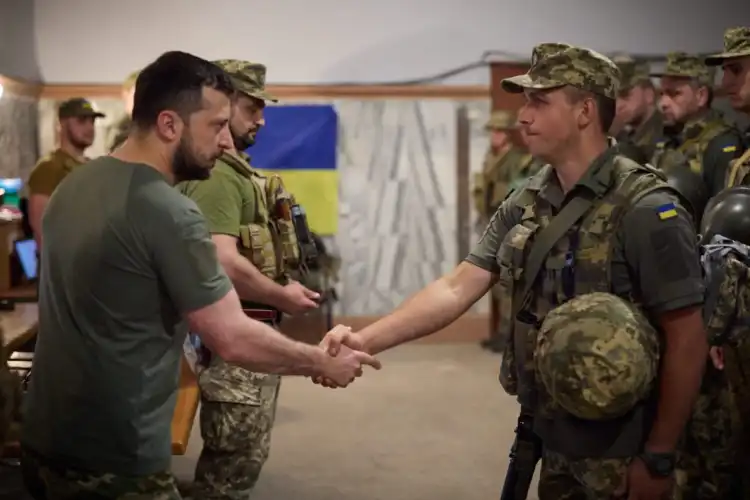Ukraine has found itself embroiled in a conflict with Russia since 2014, following the annexation of Crimea by Moscow and the subsequent Russian-backed separatist movement in eastern Ukraine. As the conflict drags on, Ukraine has become increasingly reliant on foreign military aid and arms imports to maintain its security against a perceived Russian threat. In 2022, the Stockholm International Peace Research Institute (SIPRI) revealed that Ukraine had become the third-largest importer of major arms globally, behind only Qatar and India.
According to SIPRI, Ukraine ranked 14th among the world’s largest weapons importers between 2018 and 2022, accounting for approximately 2% of global arms imports. While international arms transfers globally decreased by 5.1% over the past five years, the think tank found that European states’ arms imports rose sharply by 47%, while European NATO states increased their weapon imports by 65%, due to a perceived threat from Russia.
The United States and the European Union have provided extensive military aid to Ukraine since the conflict began. While the US and other NATO states declined Kiev’s requests for combat aircraft and long-range missiles out of fears of an escalation in the Russian-Ukrainian conflict, they have nevertheless supplied such arms to other states involved in the conflict, “particularly in the Middle East and South Asia.” This has led to criticism from some quarters, who argue that the US and other Western powers are fueling the conflict in Ukraine indirectly by arming other parties.
Pieter D. Wezeman, a senior SIPRI researcher, noted that “even as arms transfers have declined globally, those to Europe have risen sharply due to tensions between Russia and most other European states.” He added that European states now want to “import more arms, faster.” Wezeman also observed that while Russia and the US remained the largest weapons exporters in the world, Moscow’s share of arms sales reportedly fell from 22% to 16%, while Washington’s share saw an increase from 33% to 40%. Furthermore, between 2018 and 2022, US arms sales grew by 14%, while Russia’s sales fell by 31%.
Meanwhile, in Asia and Oceania, countries such as India, Australia, China, South Korea, Pakistan, and Japan ranked among the top ten global arms importers, accounting for 41% of arms deliveries in 2018-2022. Wezeman explained that the increased demand for arms is being driven by a perceived growing threat from China and North Korea.
In the Middle East, SIPRI reported that Saudi Arabia, Qatar, and Egypt were among the top ten weapons importers for the past five years, with the majority of weapons being provided by the USA (54%), followed by France, Russia, and Italy. The sales included over 260 advanced combat aircraft, over 500 new tanks, and 13 frigates.
The increasing demand for arms worldwide, particularly in Europe and Asia, is a cause for concern. Many analysts fear that the arms trade is fueling conflicts around the world and making them harder to resolve. Critics argue that arms sales are often driven by profit rather than genuine security concerns, and that they can lead to human rights abuses and the destabilization of entire regions.
There are also concerns that the arms trade is exacerbating tensions between Russia and the West. While Western powers have provided military aid to Ukraine to help it defend itself against a perceived Russian threat, Moscow has accused the West of supporting the Ukrainian government in its aggression against Russian-speaking separatists in eastern Ukraine. This has led to a dangerous escalation in tensions between Russia and the West, with some experts warning of the risk of a direct military confrontation between the two sides.
Ukraine’s ranking as the third-largest global arms importer highlights the significant impact of the ongoing conflict with Russia on its military spending. While military aid from the United States and other NATO allies has helped Ukraine to strengthen its armed forces, it has also led to concerns about an arms race and human rights abuses. The conflict has also had a significant impact on Ukraine’s economy, with the country facing significant economic challenges.


